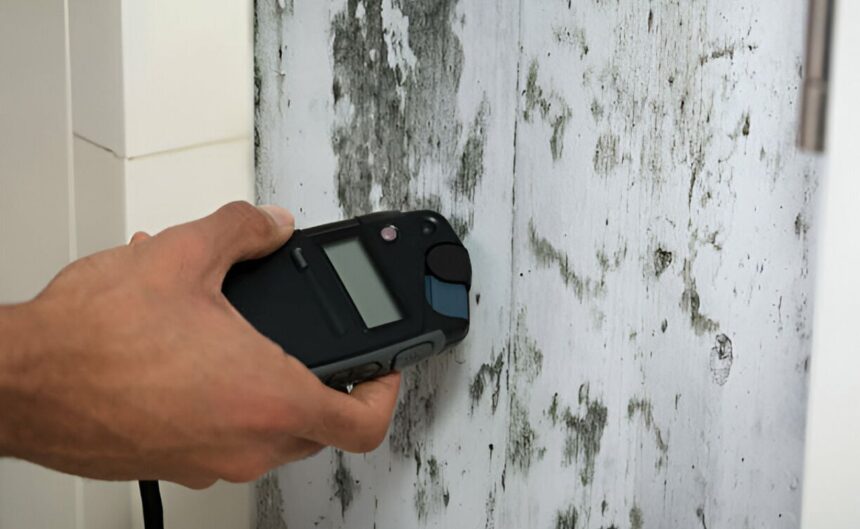Living in Maryland’s diverse climate, from humid summers to wet springs, creates perfect conditions for mold growth in our homes. As a homeowner in Maryland, understanding when to get mold testing in Maryland can be crucial for maintaining both your property’s value and your family’s health. Let’s dive into the tell-tale signs that indicate it’s time to consider professional mold testing for your Maryland home.
The Silent Invasion: Understanding Mold Growth
Mold is like that uninvited guest who makes themselves at home without you even noticing. Before we explore the signs, it’s important to understand that mold can grow anywhere with moisture, organic material, and the right temperature – conditions that are all too common in Maryland homes.
Visible Signs That Shouldn’t Be Ignored
Those Suspicious Spots
You know that feeling when you’re cleaning behind furniture and suddenly spot something that makes you pause? Those discolored patches on your walls, ceilings, or corners aren’t just aesthetic concerns. They could be telling you something important about your home’s health.
Dark spots or patches, especially in shades of black, green, or brown, are often the first visible signs of mold. But here’s the thing – by the time you see these spots, there’s usually more growing behind the scenes. These visible signs are like the tip of an iceberg, suggesting a potentially larger problem lurking beneath the surface.
The Rainbow Effect
Sometimes, mold isn’t just the typical black spots we all think about. You might notice various colors – perhaps some yellowish patches or even pinkish stains. Different types of mold can appear in different colors, and while some might be relatively harmless, others could pose serious health risks. This variety in appearance is one reason why professional testing has become so important.
The Nose Knows: Olfactory Warning Signs
That Musty Smell
Have you ever walked into your basement or opened a closet and been hit with that unmistakable musty odor? That’s often one of the earliest warning signs of mold growth. The interesting thing about mold odors is that they can be present even when you can’t see any visible signs of mold.
This distinctive smell is caused by volatile organic compounds (VOCs) released by actively growing mold. Think of it as the mold’s version of a calling card – if you can smell it, it’s trying to tell you something.
Persistent Odors
What’s particularly concerning is when these odors persist even after cleaning. If you’ve tried regular cleaning methods and that musty smell just won’t go away, it’s a strong indicator that you need professional mold testing. The smell might be coming from hidden mold growth within walls, under carpets, or in other concealed spaces.
Health-Related Warning Signs
Unexplained Allergic Reactions
Here’s something many people don’t immediately connect: if you or your family members are experiencing increased allergic reactions while at home, mold could be the culprit. Watch out for symptoms like:
- Persistent sneezing
- Runny or stuffy nose
- Itchy, red eyes
- Skin irritation
- Wheezing or difficulty breathing
- Headaches that seem to improve when you’re away from home
These symptoms becoming more noticeable when you’re in certain areas of your house is a particularly telling sign.
Chronic Respiratory Issues
More serious than occasional allergic reactions are chronic respiratory problems. If anyone in your household has developed persistent respiratory issues or if existing conditions like asthma have worsened, it’s crucial to consider mold testing. Mold exposure can significantly impact respiratory health, especially in children, elderly individuals, and those with compromised immune systems.
Structural and Environmental Indicators
Recent Water Events
Water is mold’s best friend, and any recent water-related incidents in your home should put you on high alert. This includes:
Things like flooding, which is not uncommon in certain parts of Maryland during heavy rains or storms, can create perfect conditions for mold growth. Even small incidents like overflowed toilets or leaking pipes can create enough moisture for mold to thrive.
Humidity Havoc
Maryland’s climate, particularly during summer months, can create high indoor humidity levels. When your home’s humidity consistently stays above 60%, you’re creating a mold paradise. Pay attention to signs of excess moisture like:
Condensation on windows and pipes Damp spots on walls or ceilings Water stains that seem to grow or change Peeling wallpaper or paint
Hidden Spaces and Air Flow Issues
Poor ventilation in bathrooms, kitchens, or other high-moisture areas can create perfect conditions for mold growth. If you notice that certain rooms feel stuffy or have poor air circulation, this could indicate potential mold problems, especially in areas like:
Behind large furniture pieces Under sinks Around window frames In crawl spaces or attics
Recent Renovations or Home Changes
Post-Construction Concerns
Have you recently completed any home renovations? Construction work can often reveal previously hidden mold problems or create conditions that lead to new mold growth. Additionally, if proper moisture barriers weren’t installed during construction, you might be at risk for future mold issues.
Changes in Home Systems
Modifications to your heating, ventilation, or air conditioning systems can sometimes create unexpected moisture problems. Even something as simple as replacing windows can affect your home’s airflow and moisture levels, potentially creating conditions favorable for mold growth.
Professional Testing: When and Why
Beyond DIY Assessment
While home testing kits are available, they often provide incomplete or misleading results. Professional mold testing is particularly important because it can:
Identify the exact types of mold present Determine the extent of the infestation Locate hidden mold growth Measure indoor air quality Provide detailed recommendations for remediation
Prevention is Better Than Cure
Regular mold testing can save you money in the long run. By identifying and addressing mold problems early, you can prevent:
Extensive structural damage Costly repairs Decreased property value Serious health issues Insurance complications
Taking Action
Remember, mold testing isn’t just about finding existing problems – it’s about protecting your home and health for the future. If you’re noticing any of these signs, don’t wait for the problem to worsen. Maryland’s climate makes our homes particularly susceptible to mold growth, but being proactive can help prevent serious issues down the line.
While some signs of mold are obvious, others are more subtle. Trust your instincts – if something seems off about your home’s environment or if you’re concerned about potential mold growth, getting professional testing can provide peace of mind and, if necessary, a clear path forward for addressing any issues.
Remember, dealing with mold early not only protects your home’s value but, more importantly, safeguards your family’s health. When it comes to mold, it’s always better to be safe than sorry.






